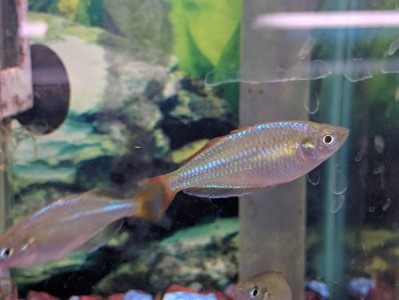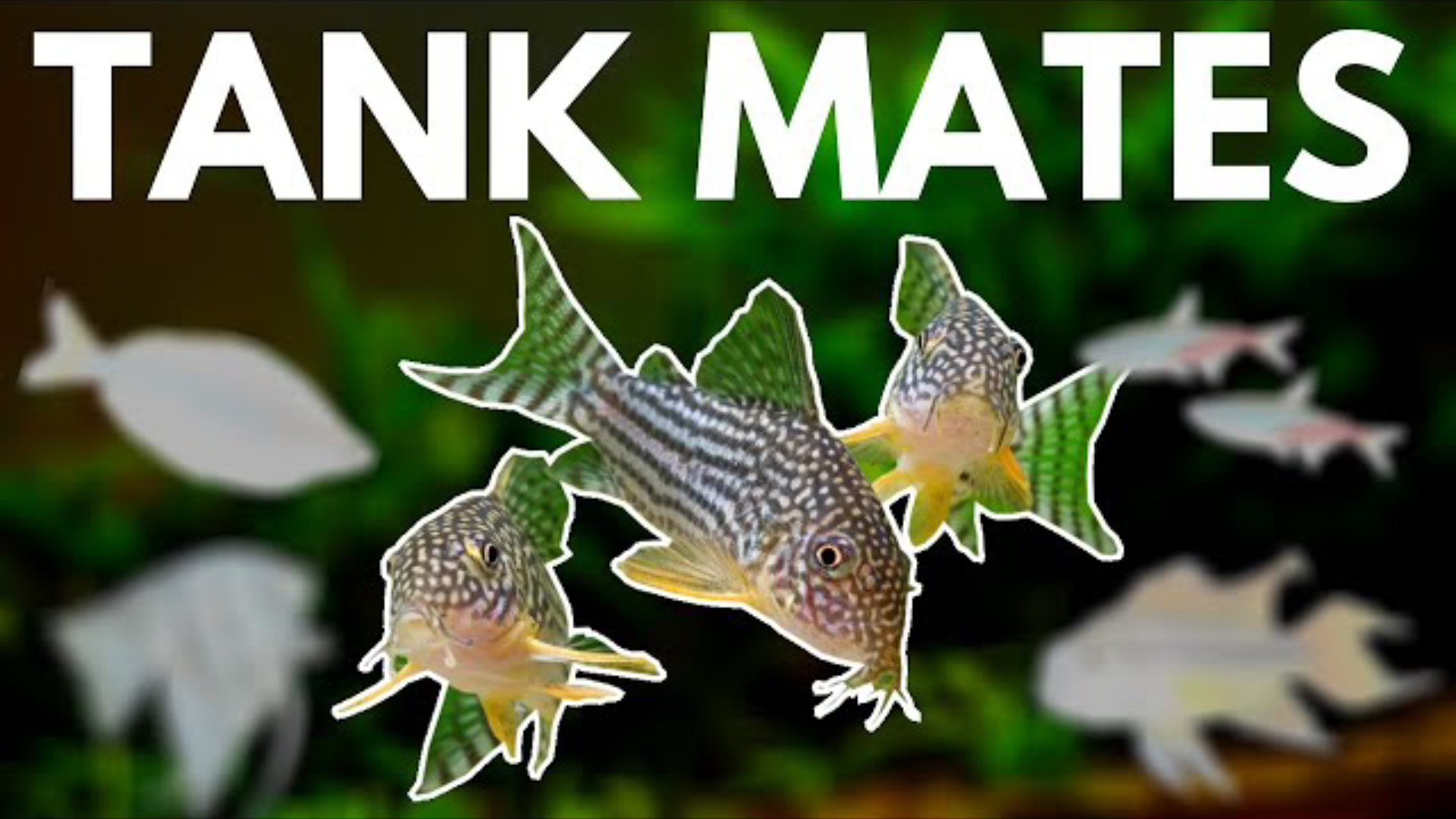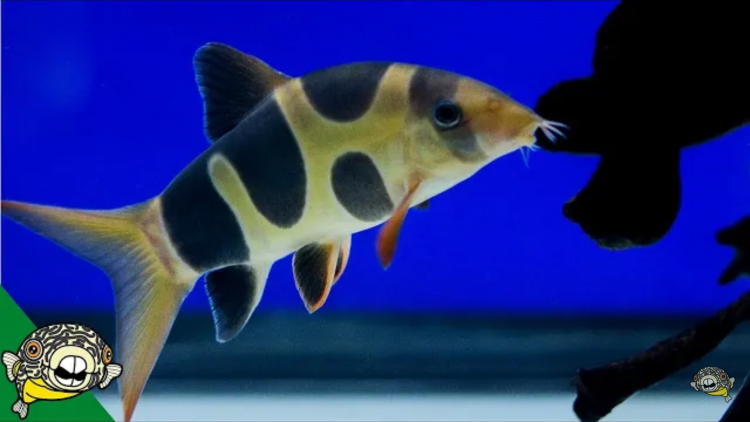- Name:
Praecox Rainbow
(View AKA's) - Family: Melanotaeniidae
- Species: Rainbowfish
- Scientific Name: Melanotaenia praecox


General info about Praecox Rainbow
These fish are pinkish but can look blue under certain lighting, they have brightly colored fins which coloration differs between males and females, the former have red fins while the latter have yellow fins. They only reach up to 2.5 inches. To keep these fish in captivity water pH should be between 6.8 and 7.5 and water temperature should range from 73°F to 79°F. The tank should have dense vegetation, floating plants, open areas for swimming and a sandy substrate. The tank should also have a cover to prevent them from jumping off. They are peaceful and can be kept in community aquariums with similar sized fish, also, they should be kept in shoals of at least 6.
Praecox Rainbow Diet & Nutrition
These fish is omnivorous. In captivity they should be fed with dried foods supplemented with live foods and vegetable matter.
Determining Sex of Praecox Rainbow
Male’s fins are red while female’s are yellow.
Breeding & Spawning Praecox Rainbow
To breed this species in captivity the breeding tank should have water pH around 7.0 and water temperature ranging from 75°F to 80°F. Once the eggs are scattered the adults should be removed to prevent them from eating the eggs. The eggs will take 7 to 10 days to hatch.
Praecox Rainbow Origin
These fish are native to Indonesia. They inhabit slow moving waters.
Caution with Praecox Rainbow
Attention must be paid when purchasing wild caught individuals since these often bring parasites, as such, it is best to set a quarantine period before adding them to the aquarium.
Acclimating Praecox Rainbow
The water in which these fish are packaged is different from the water in the tank, since these fish are extremely sensitive to water conditions the acclimation process is very important. This process should never be rushed. Aquarium lights should be off for at least the first 4 hours of the fish in the new tank and it should not be fed in the first 24h. There are two acclimation methods: Floating Method and the Drip Method.
Floating method - the aquarium lights should be off and lights in the room should be dim, the bag in which the fish is should be placed in the surface of the water to float for about 15 minutes, this allows the water in the bag to adjust to the water in the tank. The bag should then be cut under the knot and the top edge of the bag should be rolled down one inch, then ¼ cup of the aquarium water should be added to the bag, this step should be repeated every 4 minutes until the bag is full, then half the water of the bag should be discarded and the bag should be put to float again and ¼ cup of the aquarium water should be added to the bag every 4 minutes until the bag is full. Afterwards, the Discus can be moved into the aquarium.
Drip method – the aquarium lights should be off and lights in the room should be dim, the bag in which the fish is should be placed in the surface of the water to float for about 15 minutes, this allows the water in the bag to adjust to the water in the tank. The bag contents should be poured into a 1 gallon bucket that has never been cleaned with any chemicals, the fish should be enterally submerged. A siphon, using airline tubing, should be set up and a drip line should run from the main aquarium to the bucket. Several loose knots should be tied in the airline tubing to regulate flow. Sucking the end of the airline tube that goes to the bucket will begin a siphon, the flow should be regulated to 2 to 4 drips per second. Once the water in the buckets doubles, half should be discarded and the process should be repeated until it doubles again. Afterwards, the fish can be moved to the aquarium.
Original Detail
| Name | Species | Family | Scientific Name | More Detail | Added by |
|---|---|---|---|---|---|
| Praecox Rainbow | Rainbowfish | Melanotaeniidae | Melanotaenia praecox | These fish are pinkish but can look blue under certain lighting, they have brightly colored fins which coloration differs between males and females, the former have red fins while the latter have yellow fins. They only reach up to 2.5 inches. To keep these fish in captivity water pH should be between 6.8 and 7.5 and water temperature should range from 73°F to 79°F. The tank should have dense vegetation, floating plants, open areas for swimming and a sandy substrate. The tank should also have a cover to prevent them from jumping off. They are peaceful and can be kept in community aquariums with similar sized fish, also, they should be kept in shoals of at least 6. |
PalaciosAn |




